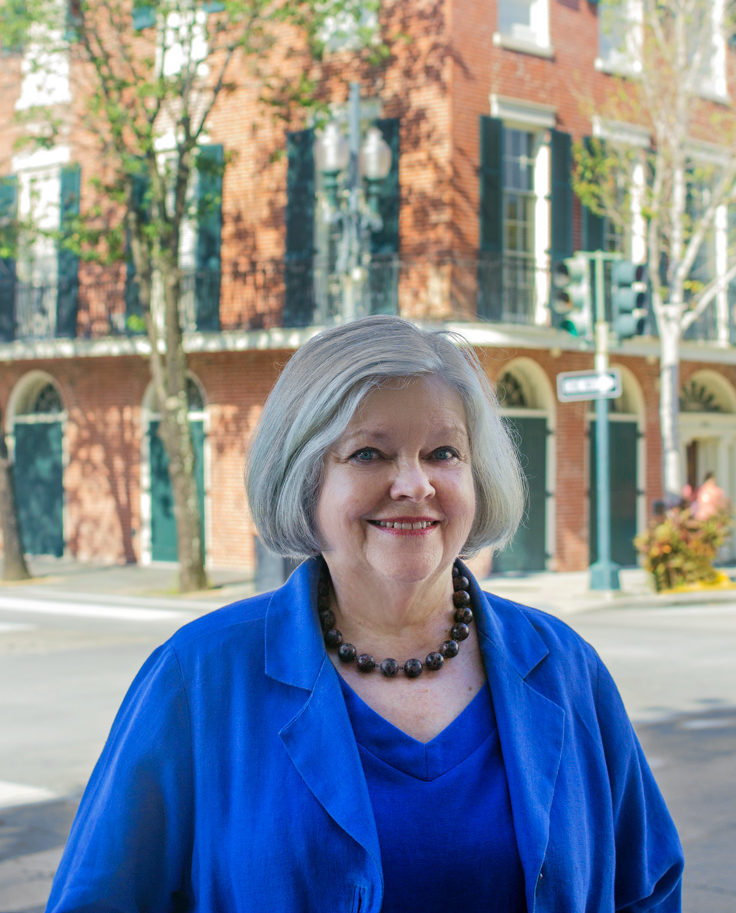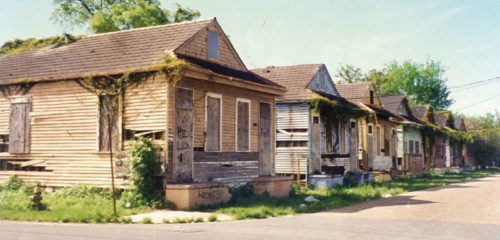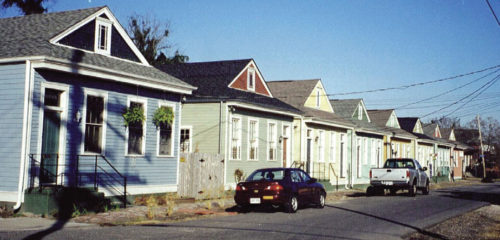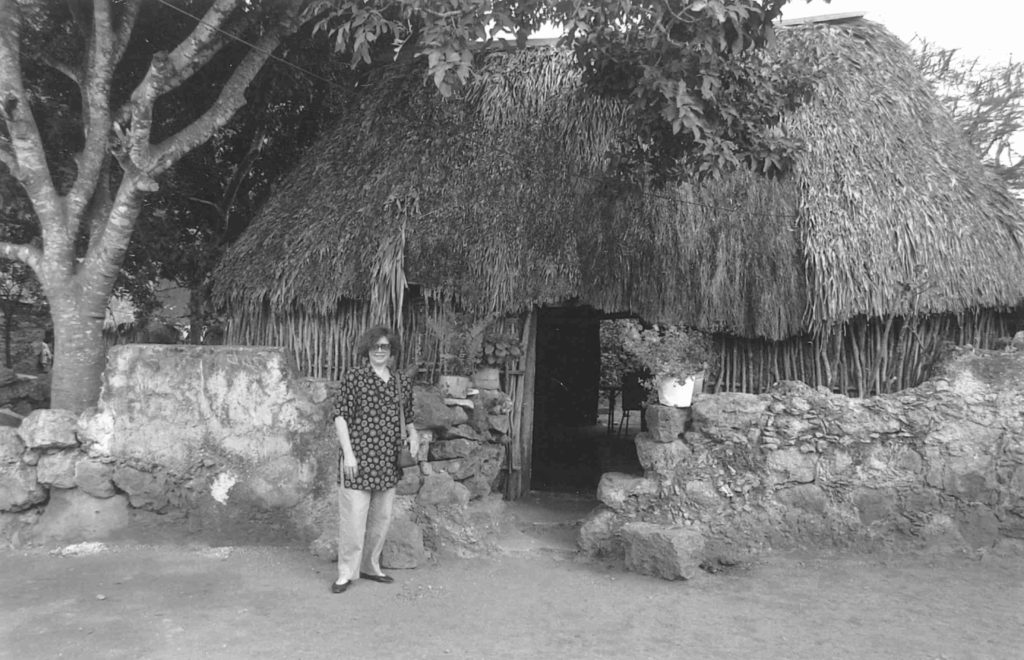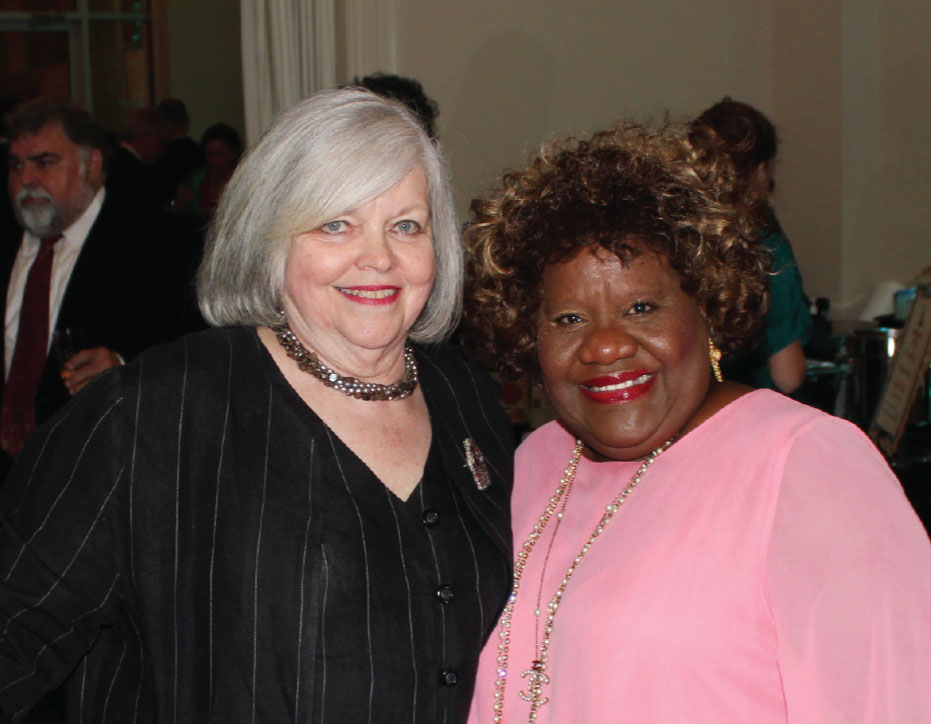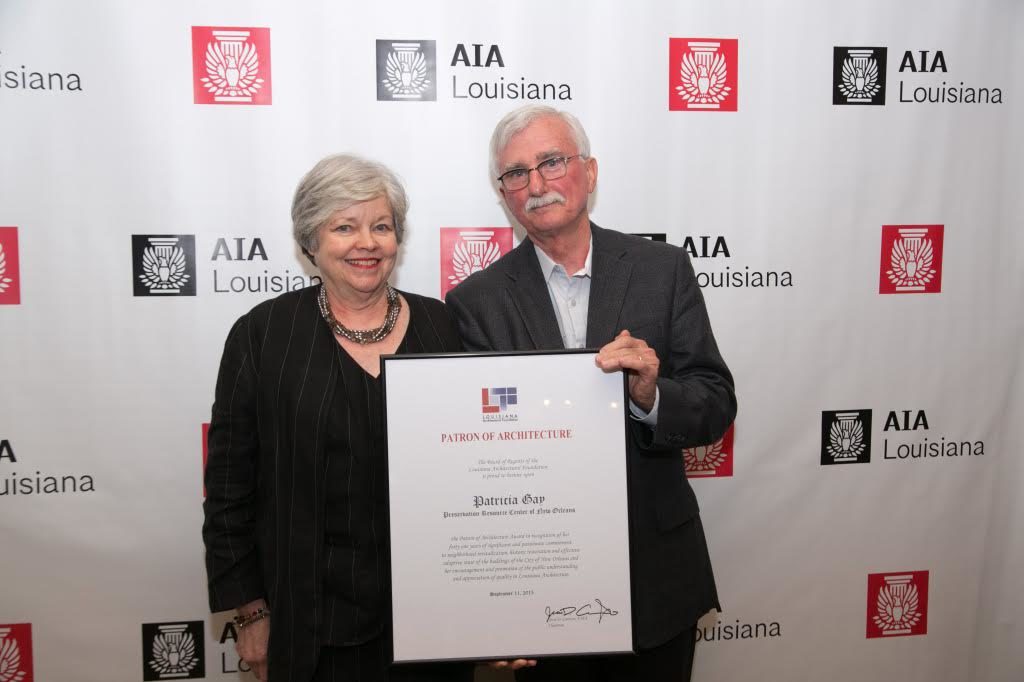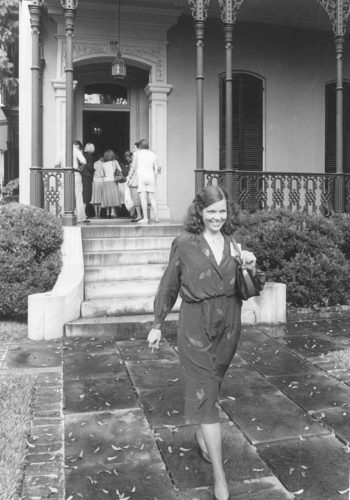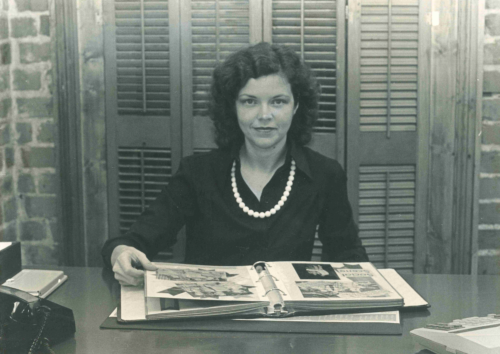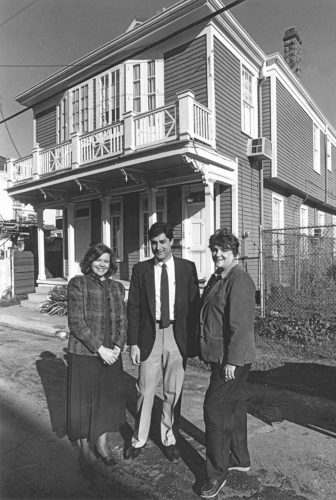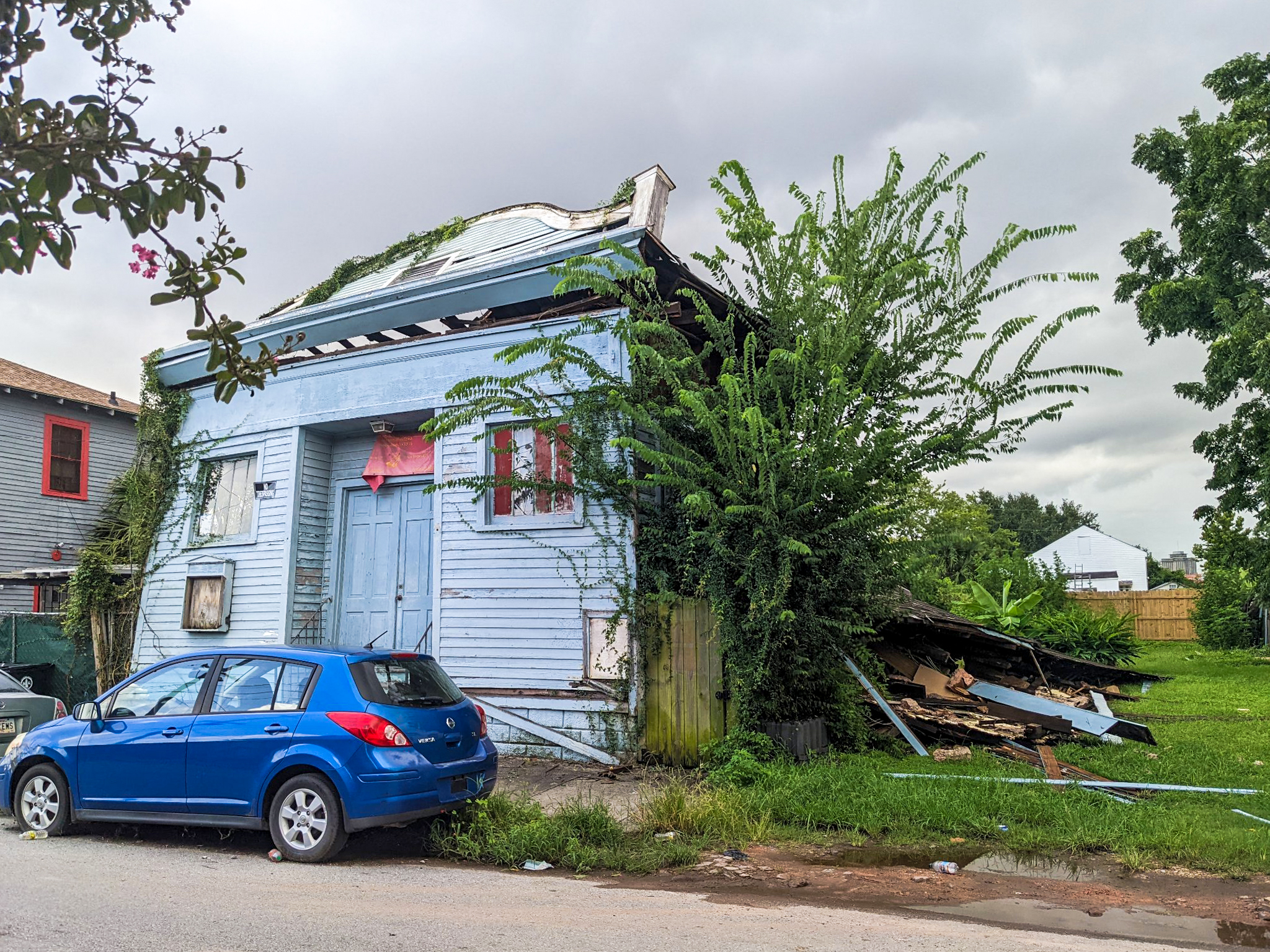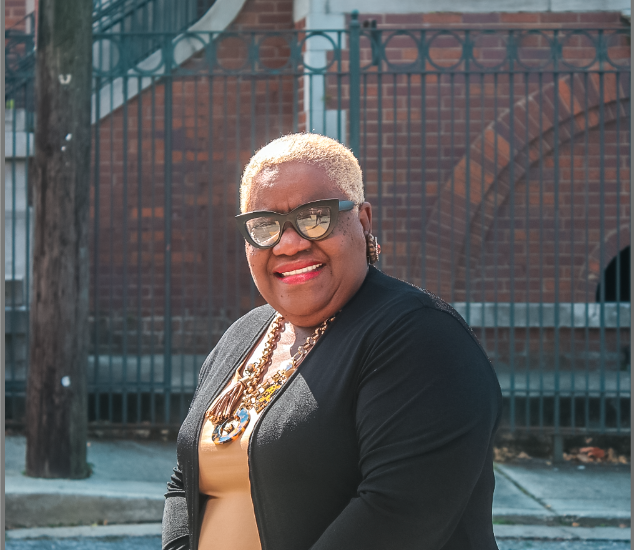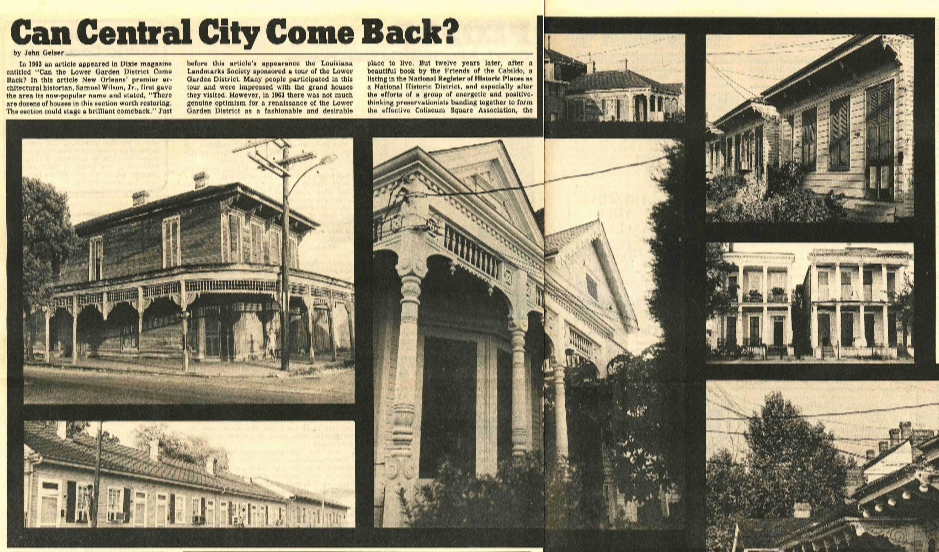As a recent Baton Rouge High School graduate, Patricia Gay — then Patricia Heatherly — was eager to move to New Orleans, the “big city.” Though she didn’t get off of the campus of Newcomb College much during her years of studies, she found New Orleans exhilarating.
Little could she have known that, in the decades to follow, her passion for New Orleans and preservation of the city’s unique built environment would propel both herself and the organization she ran for over three decades, the Preservation Resource Center, into national prominence.
Though Patty Gay announced retirement from her role as executive director of the Preservation Resource Center this past July, her incredible legacy will endure, through both the impact she has had on the city of New Orleans during her 37-year tenure, and through the way her passion for preservation will continue to shape PRC and the entire city into the future. Her work safeguarding the city’s historic buildings and neighborhoods has inspired countless people, from home renovators to politicians to city leaders, in ways that have shaped the city physically and will remain in people’s hearts and minds for generations.
Local attorney Camille Strachan, who is a former board member of the National Trust for Historic Preservation, said it well: “Patty is one of the country’s strongest voices for preservation in the broadest sense. She knows all of the facts and figures, as well as the human side. She has been tireless in seeking solutions that benefit both old houses and celebrate those who built, live and work in the historic fabric of the New Orleans. It’s hard to imagine how the city would be without her years of insight and tireless action.”
Under Gay’s leadership, PRC bought and rehabilitated eight homes on General Taylor Street through its Operation Comeback department in 1998.
With degrees in social studies and history, it’s no surprise that New Orleans’ storied past captured Gay from a young age. After graduating from Newcomb College, she became a history teacher; while working at Alcee Fortier High School, she helped students organize an African-American History Club. In her spare time, she volunteered as a docent at the historic Gallier House.
Gay also volunteered with the Junior League of New Orleans at a pivotal moment in the city’s preservation history. Many Junior League members were concerned with the rampant demolitions that were clearing areas of downtown and St. Charles Avenue, and they decided to dedicate funds to help stem the destruction. The group organized “Building Watchers” tours to create awareness of the architectural wealth in New Orleans, and provided three-year seed funding for a nonprofit that would be dedicated to the preservation of the city’s built environment: the Preservation Resource Center.
Gay, active in the Junior League during this era, was quickly drawn into the preservation mission. She was one of the participants who helped launch PRC in 1974, and served as the first co-editor (along with Dana Williams) of Preservation in Print — originally known as Preservation Press — when it debuted in 1975.
Her involvement deepened as she became president of PRC’s board in 1978. In 1980, she was named executive director of the organization.
She laughed recently from PRC’s headquarters, a three-story landmark building in the Warehouse District filled with some 30 employees, thinking about the organization when she took over as director. “There were four or five people who worked with us on various projects, and we operated out of the second floor of a building on Carondelet Street and Felicity, which had been loaned to us by supporters Barry and Carol Smith.” Despite the humble headquarters, PRC was involved in some big work, even then. Gay had been involved with the revitalization of 604 Julia St. as a PRC board member — the organization’s bold move to purchase and renovate the historic structure sparked the revitalization of the row of townhomes that had been known as the “13 Sisters” in their prime, but had fallen to the distinction of “Skid Row” by the mid 1970s. In 1981, the renovation was complete, and PRC moved into Julia Row, helping bring new life to a long-neglected pocket of the city.
“I think she has had a greater impact on our city than any business man or woman, academic leader, philanthropist, whatever in my lifetime. She is our own Jane Jacobs!” – Peggy Wilson, former city Councilperson
The move was just part of the organization’s attempts to breathe life back into the city’s downtown; in 1982, under Gay’s leadership, the organization partnered with the National Trust for Historic Preservation to complete a comprehensive study of every building, and its historic worth, in the Warehouse District. The effort proved the richness of the area in terms of its historic building stock, and helped set the stage for its subsequent revitalization, with large, blighted shipping warehouses being transformed one by one into residences, restaurants and art galleries.
Next came the 1984 World’s Fair, to be hosted in the Warehouse District, and Gay had big plans: PRC sold bricks to finance an exhibit that would be visited by 500,000 fair-goers called ‘Living in New Orleans.’ “We had to tell people about living in New Orleans,” she said. “They couldn’t just think it was ‘party city.’ So I called the owner of a blighted Creole Cottage in the Lower Garden District and said, ‘Can we borrow your historic house?’ He said ‘sure.’” Under the direction of architect Frank Masson, the organization moved the house to the Fair, and, after weeks of hosting the successful exhibit, moved it right back.
“PRC’s history is us taking on things we just had to do,” Gay said. “We went from one fantastic cause to another. But I never worried about expanding, or taking on more, because we always had fabulous people involved and committed.”
It’s a sentiment that’s characteristic for Gay: She rarely takes credit, preferring instead to name the others came together to bring success to projects or PRC as a whole. “The only thing I want recognition for is loving my job, and the fabulous opportunity to work with people from all over the city,” Gay said. “It has been so wonderful, and people who believe in preservation, it tells you a lot about the person. They’re generally outgoing, see the big picture, see the relationship of the built environment to our quality of life and our economy. You become good friends with those people.”
Gay understood innately that PRC alone could not safeguard the entire city; instead, residents must feel inspired and proud enough of the city and neighborhoods they call home to want to become advocates themselves. Thus, a major part of the organization’s mission has always been education efforts. “The Preservation Resource Center is what it is today because of Patty’s ability to take the concept of preservation and translate it into a meaningful entity,” said Muffin Balart, former PRC board president. “She has steered this ship for 37 years and she has been masterful. Patty is not a heavy-handed administrator; rather she inspires those around her to achieve the goals of the organization.”
“It was around 1982 when I met Patty Gay,” said former PRC board member and renovator Adolph Bynum, Sr. “We both found ourselves at a Tremé house on Esplanade Avenue that was being renovated; Patty was visiting a friend who was getting the work done, and I stopped there out of curiosity. After learning who she was, I invited her to come see my renovations, just a few blocks away.
“No one has done more for historic preservation in New Orleans since the mid 1970s than Patty Gay. I am thankful to have known her and to have worked with her for the past 8 years. I wish her the best in her well-deserved retirement and hope she remains a staunch advocate for our built environment and for our neighborhoods.” – Susan Guidry, City Council District A
“It was then that Patty asked me, ‘Do you know that you are a preservationist?’ All I knew was that I wanted to fix the properties to the way they looked in the French Quarter when my mom would take me there as a child. I was not familiar with the term ‘preservationist.’ Patty introduced me to the world of preservation, recommending architecture books to read. She invited me to a Julia Jump fundraiser where I met people in the community who supported preservation, allowing me to learn more. I later became a member of PRC’s Board of Directors, which allowed me to be more involved with the rewards and challenges of the organization,” he said.
Gay also involved Aldoph’s wife Naydja Bynum with PRC after meeting her at a party. “She was happy to hear about my interest in preservation and was very informative and encouraging when she learned my plans to invest and renovate shotgun properties in New Orleans,” Bynum said. “Patty kept in touch with me, inviting me to activities and programs of the PRC, and soon asked me to consider being a member of the board. Not only did I join the board, I served as the president, facing one of the organization’s many preservation versus developer’s battles [against Harrah’s Casino]. During that time, Patty was right by my side. Having been associated with Patty and many of the staff over the years, I claimed her and that staff as my PRC family.
“I must say that Adolph’s and my interest and love for preservation contributed to our attraction to each other and ultimately marrying,” she added. “We thank Patty for her part in that.”
Gay was invited twice by the government of Indonesia to lecture on the merits of preservation in their country.
PRC continued to grow in the 1980s and ‘90s under Gay’s leadership, and its impact on preservation in New Orleans was profound. The staff organized popular tours to promote appreciation for the city’s architecture, such as Stained Glass in Sacred Places tours, which visited churches around the region (and is still a popular biannual PRC offering over 30 years later), and Live in a Landmark tours, which sought to fix blight by attracting hundreds of prospective homebuyers to vacant homes in 16 historic neighborhoods. Staff partnered with the Historic District Landmarks Commission locally, and the National Trust for Historic Preservation nationally, to help designate historic neighborhoods. And the organization expanded permanently in 1988 with two new endeavors: Operation Comeback and Christmas in October, now known as Rebuilding Together New Orleans.
The idea behind Operation Comeback came from local Realtor and urban pioneer Howard Schmaltz, Gay said. “There were a lot of urban pioneers who had moved into the Lower Garden District, and Howard came to me and said, ‘You have to focus on the river-side of Magazine Street,’” she said. “The 1400 block of Magazine was blighted; we had to do something.” The initiative was designed initially to help provide funding to prospective homeowners who often couldn’t get banks to loan them the money to purchase and renovate blighted homes; later it evolved so that PRC would purchase and restore blighted properties, and then sell them, often to first-time homebuyers. On Magazine Street, Operation Comeback’s initial endeavor, 11 boarded-up buildings were all sold and renovated.
In tandem with Operation Comeback’s development was that of Christmas in October, an initiative that sought to provide home repairs to low-income and elderly, and often disabled or veteran, residents in historic neighborhoods to allow them to be able to afford to safely age in place in their homes. The opportunity to help others attracted many volunteers: 300 came out to participate in the first rebuild blitz in 1988, and 10 homes were renovated in the Lower Garden District. “We jumped at this opportunity because we really wanted to help the low-income homeowners in the neighborhood,” Gay said.
To date, Operation Comeback has revitalized over 100 homes across the city, having a significant impact in neighborhoods such as Holy Cross. Many of the homes saved through the program were in extreme disrepair; Gay remembers that a house actually collapsed during its renovation as PRC worked to bring back a whole block of blighted shotguns on General Taylor Street in 1998. But the construction crew built it back, and the block’s eight houses, freshly revitalized, sold to eager new homeowners and helped spur significant development in the surrounding Uptown neighborhood. “Any building can be saved, where there’s a will to do so,” Gay is fond of saying.
“The stars must have been perfectly aligned when they miraculously brought Patty Gay and the Preservation Resource Center together 37 years ago. The marriage was truly made in heaven! Inarguably, the PRC would not be the outstanding organization it has become, the cityscape of New Orleans would not be the same, and the preservation movement nationally would not have gained its momentum without Patty. In exchange, Patty’s career enabled her to focus her boundless energy on her passion for preservation and saving our city’s architectural heritage. Aside from her obvious accomplishments, however, what has made Patty a beloved and respected leader comes from the very essence of her soul. Having known and worked closely with Patty at the PRC for over 35 years as a volunteer, board member, board president, and staff member, I can attest to the fact that she is one of the kindest people I have ever known. Always supportive and proud of her staff, she led with the gentlest hand, giving staff the opportunity to use their own initiative in handling their departments. She acted as a cheerleader for each one of us, delighting in praising our efforts and never taking credit herself. She never tired of reminding us of the work yet to be done and the importance of our diligence in preserving our architectural heritage. Her patience and enthusiasm are inexhaustible; her vision limitless. Generous to a fault, Patty’s frequent staff parties featuring her world-famous but secret ham recipe, helped create a bond among her staff. It’s hard to imagine the PRC without Patty Gay. Her departure leaves a huge void not only in our hearts but in the ranks of those stalwarts dedicated to the preservation of New Orleans.” – Jackie Derks, ad manager, Preservation in Print & former PRC board president
Rebuilding Together New Orleans, the modern incarnation of Christmas in October, has also had a deep, lasting impact on homeowners and neighborhoods across the city. Around 1,5000 homes have been renovated by volunteers and RTNO staff since 1988, and many families were able to come home after their houses were inundated by floodwaters in Hurricane Katrina thanks to the department’s work.
The mission of PRC shifted temporarily after the floodwaters of late August 2005 receded. “Preservationists who had been addressing blight and abandonment for years were ready for the Katrina aftermath,” Gay said. “New Orleanians love their neighborhoods and jumped to work the minute they were allowed to return to the city.” Every department at the organization shifted for months after the storm to focus on emptying, gutting and then rebuilding houses to bring families home. PRC advocates also fought to save buildings from being razed unnecessarily. Many homes that PRC and others knew could be saved were deemed beyond repair by authorities; as PRC fought to keep as many safe from bulldozers as possible, the organization also opened a salvage store to at least save and reuse materials from buildings whose fates were already sealed.
Gay is convinced that the pre-Katrina success of PRC and preservationists across the city to create strong historic neighborhoods with restored building stock and empowered residents directly bolstered Katrina recovery efforts. “Preservation work prior to Katrina was a major factor in the city’s comeback,” she said. And what preservationists in New Orleans couldn’t achieve alone, others came to help. “Volunteers from all over the country came for years to help with recovery efforts,” she said. The National Trust for Historic Preservation established a full-time position at PRC to assist with recovery work, and preservationists’ efforts had a major impact on neighborhoods across the city.
PRC’s staff size, funding and capacity exploded in the months after Hurricane Katrina, and the momentum spurred by disaster recovery has carried the organization forward in the past 12 years. PRC’s staff has since published books, hosted symposia, held countless tours and workshops, and more, all under Gay’s inspiring leadership. “I feel so fortunate to have had the job,” Gay said. “There were always opportunities and causes — and it was always exciting.”
Gay poses with Barbara Lacen Keller, who will soon help steer PRC’s African American Heritage Committee, at a recent Julia Jump fundraiser.
Gay’s legacy is far from just local impact. As she steered the PRC to revitalize New Orleans’ historic neighborhoods, she also advocated tirelessly on the state and national levels to bolster preservation efforts — primarily by fighting to save state and federal historic rehab tax credits. Gay became involved with the grassroots, Washington, D.C.-based nonprofit Preservation Advocacy in the early 1980s, and set up a Tax Task Force in New Orleans as part of an effort to save the federal rehab tax credit, which was threatened with elimination at that time. The effort was successful, but lobbying to save the credit on the federal and state levels is ongoing every year, and Gay’s commitment to that cause has never wavered. “To think that Louisiana excels nationally in utilizing rehab tax credits — our state is always in the top 10 of dollars invested through the credit — and we still have to convince leaders of its impact means we need advocacy in Baton Rouge to be stronger,” she said.
One of Gay’s strongest convictions, a defining mantra these many years, is that preservation efforts spur economic development. She has lectured on the subject, held meetings with countless business leaders and politicians to help them see the connection, and has had measurable success. “Patty has done an amazing job,” said local business magnate Joe Canizaro, who is known for both developing new real estate and preserving historic buildings as well. He met Gay and, through her influence, first became involved with PRC in the late 1970s. “She is the individual who really helped me to understand what I needed to know about preservation, and that’s why I got involved in preservation so long ago,” he said.
“Patty has always been my muse, my source for artistic inspiration regarding the critical importance of historic preservation and economic development, especially around the tourism economy. It is well known that people want to visit a city where that city respects its environment and its history. Visitors want to be inspired. They want to be enlightened. They want to be moved by beauty. The work that Patty has done for more than three decades has allowed both citizens and visitors to travel this journey.” – Julie McCollam, former editor, Preservation in Print
“One of Patty’s key maxims has always been that preservation is vital economic development in a city like New Orleans that doesn’t have enough other industries,” said Jack Davis, a PRC adviser and former board member of the National Trust for Historic Preservation and the Congress of New Urbanism who is currently acting as interim executive director as PRC’s board undertakes a search for the next permanent director. “Her core message is that preservation helps keep intact the city that the world loves as New Orleans. Right from her start, she built an assertive and positive organization that proved a main reason why New Orleans has been able to protect itself as a great urban environment.”
Nationally and locally, Patty Gay has been the face and spirit of New Orleans preservation for decades. And though many can’t imagine PRC without her, Gay herself has the utmost enthusiasm about the organization’s future. “We have such a capable and motivated staff, I have never been so confident about the future of PRC,” she said.
Though the PRC has accomplished much during Gay’s tenure — only a fraction of which is actually touched upon in this article — there is still much to be done, she insists. “Louisiana has been number one in the nation in the use of rehab tax credits for the past three years, and is number 50, nationally, in so many other things,” she said. State leaders should recognize that preservation programs work, that Louisiana excels in implementing them, and that communities across the state have benefited economically in myriad ways thanks to the programs — and therefore should not just support, but should strengthen incentives to promote preservation work, she said.
Funding to strengthen the Main Street program and the State Historic Preservation Office; opportunities to reach politicians and business leaders to convince them of the merits of preservation; harnessing preservation efforts to bolster the tourism economy while also utilizing programs to improve residents’ quality of life; all of these and more are passions of Gay’s that still lack realization.
“But that’s the exciting thing — there’s still so much potential for the future,” she said.
Gay is presented with a Patron of Architecture award from the American Institute of Architects/Louisiana chapter by Jesse Cannon, FAIA in 2015. Gay has won numerous awards through the years. She was honored at the Preserve Louisiana award ceremony in Baton Rouge on Sept. 6, and is being honored by the New Orleans Downtown Development District for a lifetime of achievement on Sept. 22.
I was editor of Preservation in Print just before the dawn of the digital age. It was still the world of cut and paste, and deadlines dictated by the Greyhound bus schedule to Alexandria, where the paper was printed. The galleys were huge, unwieldy boards encased in a heavy plastic portfolio. If copy was late, I would find myself staggering in the dark to the rear of Union Passenger Terminal where the bus station was, hoping to get back alive. Patty’s editorial was often late, so added to this angst was the editorial unease of not having even seen Patty’s piece. How could anyone possibly write a coherent article on a serious subject at the last minute? Very soon I realized that Patty was one of those people who miraculously could do this. She didn’t have to research facts, formulate a position, gather other opinions, marshal arguments or work out a cogent conclusion. Because she lived so completely in the world she worked in, all of these questions, answers, issues and arguments were at her mental fingertips. Only an extraordinary commitment married to personal passion could operate effectively this way. Once I understood all of this, I quit gnawing on the edge of the plastic portfolio and just worried about the Greyhound situation. Patty’s gift for focusing on cause and effect, problem and solution, and on exemplars of what COULD be was momentous for the city’s preservation movement. Few can say their life’s work fundamentally improved the city they lived in. Patty can.” – Julie McCollam, former editor, Preservation in Print




